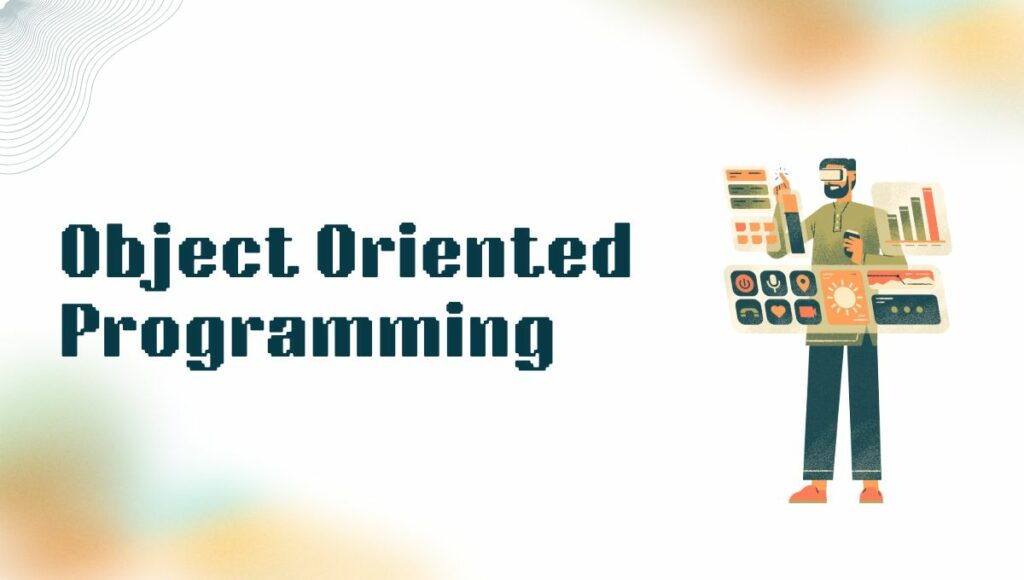The world of Big Data analytics is gradually shifting, which means that moving into 2025, the field will become more interesting than ever.
But do you ever ask yourself where this change comes from or what drives it?
It’s Object-Oriented Programming (OOP)—a phenomenon that people mostly link with software engineering—that is driving this revolution.
If you are familiar with coding terminology, then you must have heard and wondered all about object-oriented programming. Think of it as a completely different approach towards software development.
Why is Object-Oriented Programming Vital for Big Data?
OOP in Big Data is about organising and managing data efficiently. Its principles—encapsulation, inheritance, and polymorphism—help break down mammoth datasets into manageable “objects.” This modular approach is particularly vital as Big Data Tools in 2025 become increasingly sophisticated.
For example, Python and Java, programming languages used in Big data, depend on OOP concepts. It offers a framework, productivity and modularity, so data scientists can work on the signal rather than the noise. Thus, one should demonstrate the strengths of OOP in Big Data when speaking about object-oriented programming.
This allows a single interface to characterise a broad category of actions, after which differentiated classes of objects may go through the same interface. That means that polymorphism works with different objects of one type, and the type of an object is the base class of the given type.
Developers encapsulate data and operations as one unit or a defined class. In fact, the principle does not allow getting to other objects in order to prevent changes. This practice offers good security and guards against unwanted changes in data. It also assists the developers in making other extra changes or modifications in the future without much complication.
Transmission of code depends on how the objects behave, thereby making it the most crucial element in OOP. The objects of the programme pass and respond to messages (data) to each other, principally through methods.
Here’s a breakdown:
| OOP Feature | Application in Big Data Analytics |
| Encapsulation | Protects sensitive data during analysis. |
| Inheritance | Simplifies reusing existing data models. |
| Polymorphism | Enables flexibility in applying algorithms. |
What is Big Data Analytics?
Big data refers to data that is beyond the ability of usual data processing software to handle. This is a large volume of structured, semi structured and unstructured data that get produced in a split of a second.
It includes three Vs:
- Volume: Some of the key challenges relating to computing include: The sheer size of data generated.
- Velocity: It means the rate at which data gets generated and analysed.
- Variety: The options of delivering data with text, images, videos, etc.
Change Management for Effective Information Management through Big Data Analytics
Data Collection
Data acquisition refers to the process of enabling multiple information sources, including social media sites, Internet of Things devices and sensors, and customer interfaces. This data is normally in an unformatted or formatted structure, which needs good data to store it most effectively. Apache Kafka and Flume are the most commonly used tools.
Data Processing
It entails data cleansing, scrubbing or cleaning by removing any duplication or error, normalisation of data and putting them in databases. Tools such as Apache, Hadoop, and Spark are significant in the handling and processing of large datasets.
Data Visualisation
After you collect data, it gets analysed to bring out graphical information in the form of graphs or charts, dashboards, etc. Successful business intelligence tools that are available are Tableau and Microsoft Power BI, which allow decision-makers to gain insights into huge amounts of data and learn about trends or new patterns easily.
The Future of Big Data Analytics
Imagine the bustling streets of Mumbai—full of endless possibilities and a constant buzz. That’s how Big Data tools in 2025 are shaping up. Tools like Apache Spark and Hadoop are evolving to incorporate even more OOP features, enabling seamless scalability and real-time analytics.
Moreover, Big Data programming languages are adapting to meet new challenges. Languages like Scala and Kotlin, which are deeply rooted in OOP, are gaining traction in data science courses across India.
For example, researchers are analysing urbanisation in Indian cities and leveraging OOP principles. By creating objects for data points like population growth, infrastructure development, and migration patterns, they can build predictive models that aid urban planning.
If you’re an aspiring data scientist, learning OOP is no longer optional—it’s essential. Enrolling in a data science course will help you master these principles and gain hands-on experience with the Future of Big Data Analytics.
Postgraduate Programme in Data Science and Analytics by Imarticus Learning
The fusion of object-oriented programming with Big Data Programming Languages is actually preparing the stage for the next big breakthroughs. So, what’s stopping you? Go ahead and have a look at a Data Science Course today, and come join the Future of Big Data Analytics wave.
That is why when you choose the Imarticus Learning Postgraduate Programme in Data Science and Analytics, you get assured of the best job support ever. It entails one interview for every data science or analytics job seeker and an engagement with more than 500 partner organisations at the executive hiring level.
Get ready to make your education terrific with the live interactive learning module by a professional expert. The qualified faculty at Imarticus Learning makes use of case-based pedagogy to prepare you for a vast range of careers in data science and analytics.
Imarticus Learning is your pathway to a great career in data science. By joining the Postgraduate Programme in Data Science and Analytics, you prepare for a career essential to nearly every industry!









